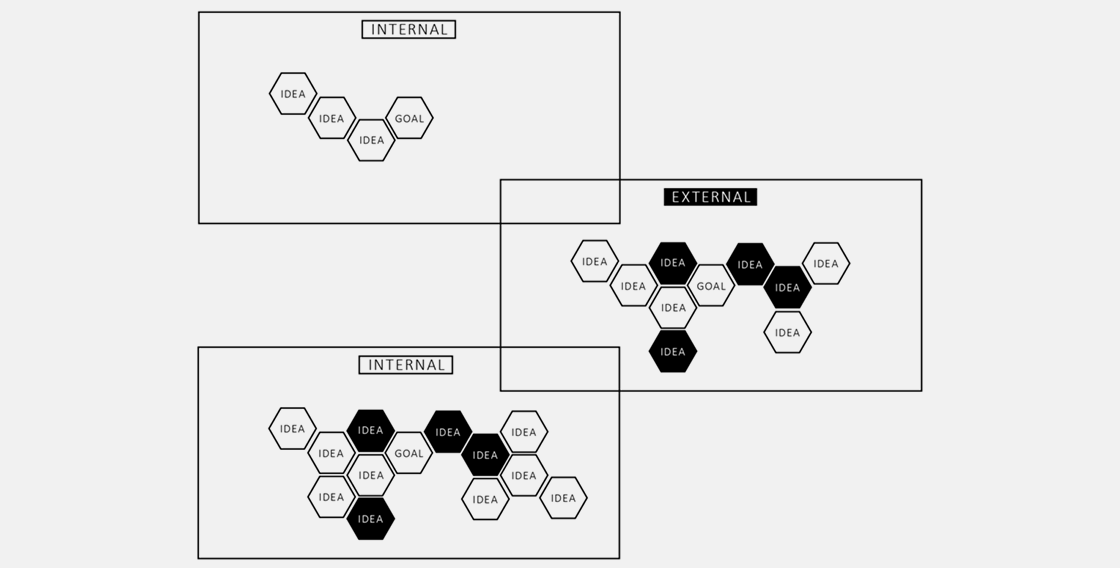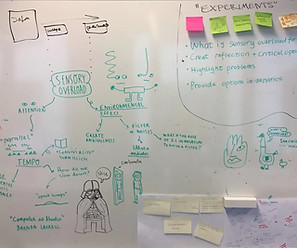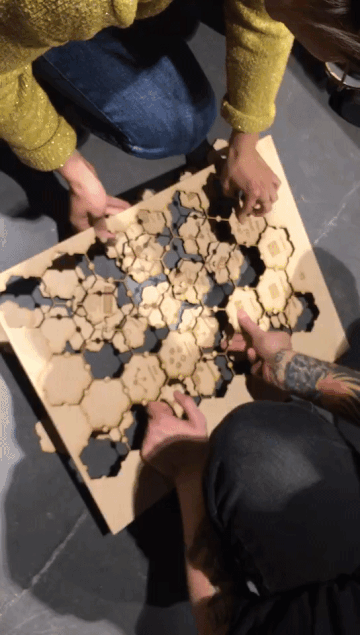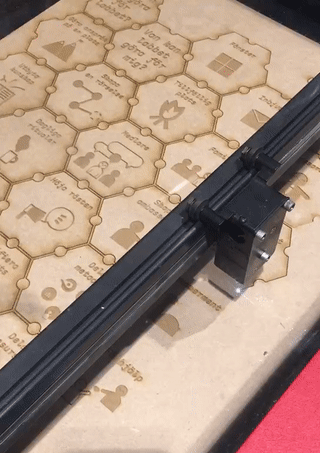

A flexible participative tool
Collaborating with Inclusion Lab
.png)


ROLE
Designer
Facilitator -
Ideating,
User-Testing,
Prototyping
DURATION
Two months,
September - November
2019
TOOLS
Illustration,
Photoshop,
Laser printing
TEAM
Four designers:
Chang Cai (me),
Maureen Troelmadec,
Lennart Czienskowski,
Felix Löf


The French term «butiner» describes the process of bees gathering nectar and pollen for producing honey.
The final concept termed the Butiner allows the main stakeholder - Inkluderingslabbet to set up explorative
discussions and workshops with other groups to find out opportunities for collaboration
CHALLENGE
CONCEPTS
It is a social innovation project. The challenge of the project is to find a way of exploring possibilities that the collaborated social group can implement currently, and that can contribute to their future developments.
The final concept is designed as a game board in the shape on a hexagon(beehive) pattern made out of wood with moveable elements. Some of them have engraved questions; others have a whiteboard surface to allow annotations and still other builds on core concepts emanating from Lab, e.g "out of the box" cards.

PROTOTYPE
The tangible quality of the mechanical elements makes the developed patterns more manifest and the tool balances well between the flexibility of use and constraints coming from the designed rules that have been continuously iterated upon. Butiner can be used as a physical road-map or activity report and also be used to ideate joint activities between the lab and other actors.
Sample of application in the "ONORM" Conference
APPROACHES
Human- centered design
Research through design
Activities - based research
Prototype experience
1
2
3
4

Blank
Cards
Question Cards
Out-Of-Box Cards
Inspiration Cards
TANGIBLE CARDS
1
Blank Cards
Blank Cards use for participants to write down their ideas
2
Question Cards
Question Cards use for explorative purpose.
3
Out-Of-Box Cards
Out-Of-Box Cards provide ideas on interactive in different ways.
4
Inspiration Cards
Inspiration Cards provides different kinds of words with pictograms.
Tool elements types

Variation models
VARIATIONS
Three ways of use are proposed carefully build on the specific needs and characteristics of the Inclusion Lab and they are designed to ensure a strong sense of ownership.
Exploration
Mediation
Iterative
"Exploration" developed in the purpose of assisting the inside group growth. In this context, Butiner, used as a visualized brainstorming tool recording details in the process.
"Mediation" function aims to create a channel in the context of various participators (stakeholders) that can contribute to the developing and creating possibilities or connections through trackable assistance.
"Iterative" give a guideline that the recording function of tool Butiner can contribute to the iteration in the developing process. E.g. the goal of the workshop can shift between internal growth and external connection.
How to explore the possible solutions?
PROBLEM DEFINITION




Early workshop
Keywords of Lab 's interesting topics.
The communication at the beginning shows that Inkluderings Labbet has a vision that
A NARRATIVE METHOD designed in the first workshop with Labbet exploring their ideas and potential field based on their vision.
Exploring the sensorial side of public spaces
Workshop 01



Mode boards + sensory cards + background sounds
1
Searching
for concrete action in public spaces
2
Prepare materials
for interventions or events
3
Raise awareness
of questions related to the lab

Workshop1 analysis
The outcomes show the sensory towards the public space are individual and subjective.
It is hard to define the concrete direction for future explorations.
Workshop1 analysis
A structure that could contribute to clarify the needs and related concepts

1
Concrete concepts
to concretize and tangibilize possible actions & strategies
2
Highlighting needs
for interventions or events
Co-design
To be able to explore these needs further with the lab
3
Reframing
Workshop 02




First version of Butiner
1
Two starting points
spread / grow
internal / external
The role of the facilitator
2
Cards - Provoking / Empty
Invitation / Bridge / Empowerment...
3

Workshop2 analysis
Too early to explore concrete concept considering public space
The tool and activity had qualities in iteself
Workshop 2 analysis
Iteration on tangible material and on the improvement of comprehension cards




1
Enhancing
the tangible features
2
Increasing comprehension
Removed some metaphorical cards
Added more comprehensible ones
Reusable cards
Visual
connections between the cards
3
4
Changed the perspective
First inside within Inclusion Lab, then outside for Ornorm
Workshop 03 "ONORM" comference
Participants
see more versatile possibilities than we thought.
The dynamics of usage depending on how many people use it.
The process needs moderator or facilitator
to give instructions and stimulate discussion.
How to use the tool in different contexts
Workshop 04 Final iteration: Ownership
1
Aim: to co-create rules and approaches.
Fortify ownership
1
Added
Question cards (Vad, Hur, Vem, Varför)
Out-Of-The-Box-Cards
2
Increasing visibility
modifying connectors to have engraved arrows
2
Added Cards
Humane Values-Cards
Out - Of - The - Box - Cards
Question cards
Sustainable tool
Iteration on the board to make it more durable (Prototype only)
3



